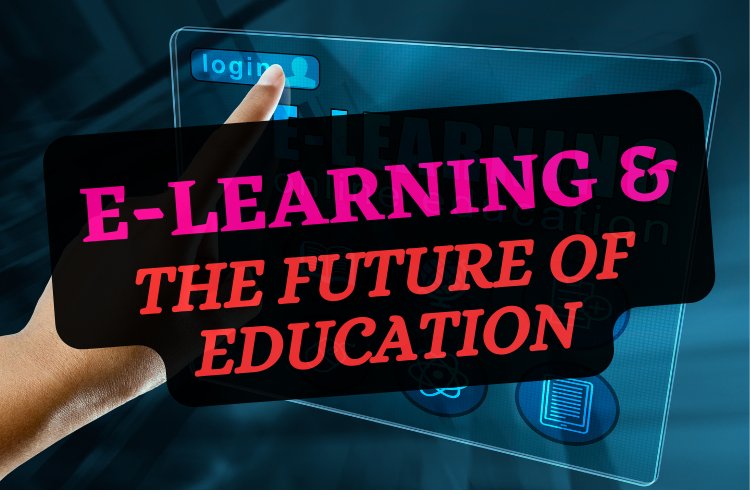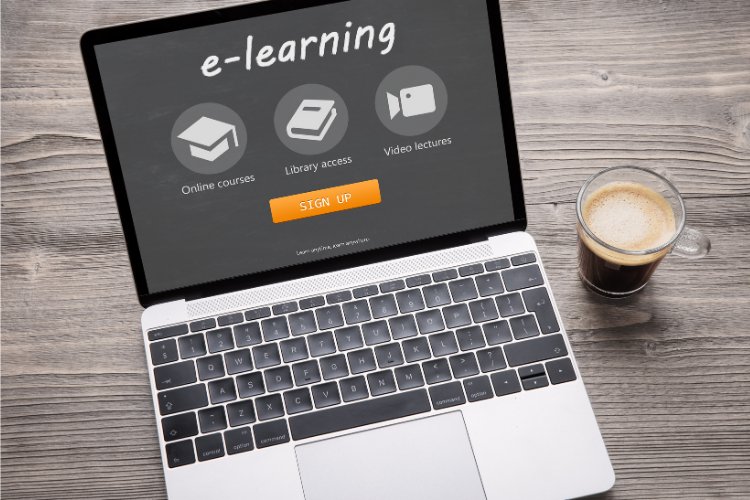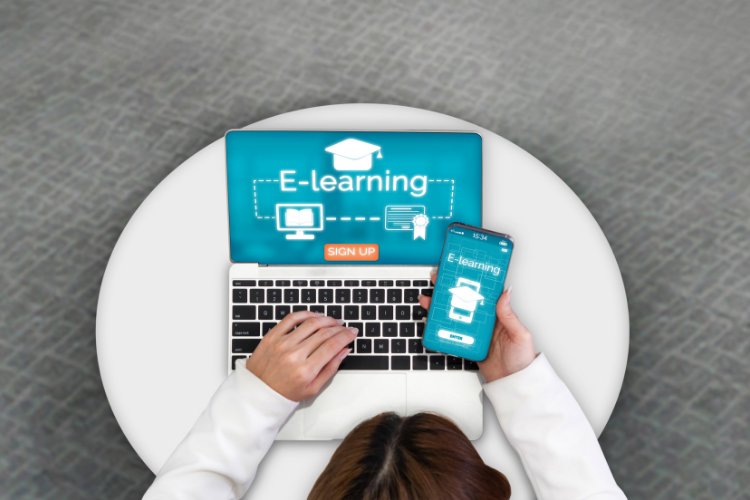eLearning And The Future Of Education
Elearning has become increasingly popular in recent years, and it has the potential to offer many benefits,.

eLearning And The Future Of Education
It is difficult to predict with certainty what the future of education will look like, but it is likely that e-learning will continue to play a significant role. E-learning has become increasingly popular in recent years, and it has the potential to offer many benefits, such as flexibility, convenience, and personalized learning experiences.
However, it is important to recognize that e-learning is not the only or the best approach for every learner or every subject. The future of education is likely to involve a combination of different approaches and technologies, including both e-learning and traditional in-person instruction.
It is also important to consider the potential challenges and limitations of e-learning, such as the lack of personal interaction, the potential for distractions, and the possibility of technical issues. In order to effectively incorporate e-learning into education, it will be important to address these challenges and to ensure that students have access to the resources and support they need to succeed.

The Rise Of eLearning
E-learning, or electronic learning, refers to the use of digital technologies to facilitate learning. It has become increasingly popular in recent years due to the convenience and flexibility it offers, as well as the potential for personalized and interactive learning experiences.
- Technology: The widespread availability of affordable computers and internet access has made it possible for more people to access e-learning opportunities.
- Convenience: E-learning allows students to access course materials and lectures at any time and from any location, which can be convenient for those with busy schedules or those who live far from their school.
- Cost: E-learning can be less expensive than traditional in-person instruction, as it eliminates the need for transportation and housing costs.
- Personalization: E-learning can be more interactive and personalized, allowing students to learn at their own pace and in a way that is tailored to their needs and interests.
- Flexibility: E-learning can be more flexible than traditional in-person instruction, as it allows students to balance their education with other responsibilities or commitments.
- COVID-19 pandemic: The COVID-19 pandemic has led to the closure of many schools and universities, which has contributed to the rise of e-learning as a way to continue education remotely.
Overall, the rise of e-learning can be attributed to a combination of technological advances, convenience, cost-effectiveness, personalization, flexibility, and the need for alternative education options during the COVID-19 pandemic.

Why Has eLearning Become So Important?
- Flexibility: E-learning allows students to access course materials and lectures at any time and from any location, which can be beneficial for those with busy schedules or those who live far from their school.
- Convenience: E-learning is convenient for students, as they do not have to physically travel to a campus or classroom.
- Personalization: E-learning can be more interactive and personalized, allowing students to learn at their own pace and in a way that is tailored to their needs and interests.
- Cost: E-learning can be less expensive than traditional in-person instruction due to the lack of transportation and housing costs.
- Accessibility: E-learning can make education more accessible to students who may not have the opportunity to attend traditional in-person classes, such as those living in rural areas or those with disabilities.
- The increasing adoption of online learning by schools and universities: Many educational institutions have embraced e-learning as a way to reach more students or to offer additional learning options.
How Is eLearning Shaping The Future Of Education?
1.Virtual Schooling
Virtual lessons are now much easier to conduct thanks to advancements in online video meeting software. Students and employees can use the virtual meeting room to watch live-streamed classes with an educator presenting a lesson. This has been demonstrated to be an extremely effective method of providing remote learning. 23% [4] of students attended live stream classes during the COVID-19 pandemic.
67% of parents were satisfied with the outcomes of this learning style. In fact, 43% of parents agree that this type of remote learning prepares their child for the next grade [4]. In the future, 79% [1] of people believe college students will attend virtual classes, while 70% believe elementary and high school students will be educated virtually.

2.Self-Directed Learning
Traditionally, both schools and businesses have set the educational timetable, informing students about what and when they will learn. However, more than 35% of employees want opportunities for self-directed and independent learning, and 74% want to learn in their spare time at work.
Furthermore, 83% [1] of Americans believe that school education will begin to take a more self-service approach, particularly for older students.As a result, 35% [3] of Learning and Development professionals are focusing on providing self-directed learning experiences for employees through the use of online learning solutions.
Schools are likely to follow suit, implementing Learning Management Systems (LMS) that allow students to access learning materials online at their own pace.
3. Sharing Learning Materials
During the COVID-19 pandemic, 79% of children used school-provided digital learning materials online [4]. Teachers can now share learning materials with students who can access them remotely thanks to cutting-edge LMS solutions.
Aside from that, there are tools that allow students to share resources among themselves.
Take, for example, StuDocu. It allows students to easily share their school and college lecture notes, study resources, and coursework with other students. To find the resources that best meet your learning needs, you can easily search by subject, school, category, and language on the learning platform.
4. Personalized Learning Opportunities
Learners are tired of sitting in classrooms and repeating lessons. Personalized learning experiences are now more possible than ever thanks to advancements in Artificial Intelligence (AI) and machine learning. Training systems can now provide more personalized recommendations for each learner by utilizing data collected from learning platforms.
This is a positive step forward that encourages workplace learning. Indeed, 79% of students said they would use personalized course recommendations based on their career objectives and skill gaps. As a result, 49% of L&D professionals believe that using AI/machine learning as a tool to drive more accurate personalization will have a significant impact in the coming years .

Future Of Education - FAQs
Here are some frequently asked questions about the future of education:
1. How will technology shape the future of education?
Technology is likely to continue to play a significant role in the future of education, with the use of digital tools and resources likely to increase. This may include the use of virtual and augmented reality, artificial intelligence, and other emerging technologies to enhance the learning experience.
2. Will traditional classrooms still exist in the future?
It is difficult to predict with certainty what the future of education will look like, but it is likely that traditional classrooms will continue to exist in some form. However, the use of technology and online learning is likely to increase, and it is possible that the role of traditional classrooms may change or evolve.
3. How will the COVID-19 pandemic affect the future of education?
The COVID-19 pandemic has had a significant impact on education, and it is likely that it will continue to shape the future of education in some way. The widespread shift to online learning has highlighted the potential benefits and challenges of e-learning, and it is possible that the use of online learning will continue to increase even after the pandemic ends.
4. Will e-learning replace traditional in-person education?
It is unlikely that e-learning will completely replace traditional in-person education. While e-learning can offer many benefits, it may not be suitable for all learners or in all subject areas. It is likely that the future of education will involve a combination of different approaches and technologies, including both e-learning and traditional in-person instruction.
5. How can we ensure that education is accessible and equitable for all learners in the future?
Ensuring that education is accessible and equitable for all learners will require addressing a range of issues, including access to technology, funding for schools and educational programs, and providing support and accommodations for students with learning differences. It will also involve addressing systemic inequalities and working to create a more inclusive and diverse education system.












